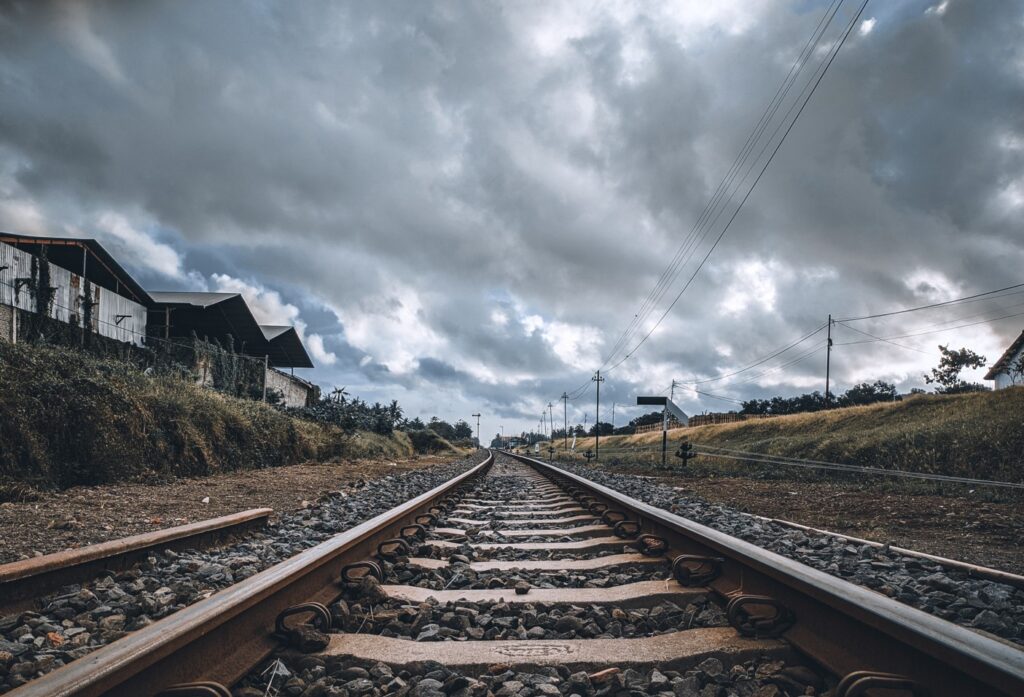It is a special experience in law to craft a complaint and forge a legal argument over time in a controversy that reaches the Supreme Court of the United States. When, in February 1973, Erwin Griswold, the solicitor general and former dean of the Harvard Law School, stood at the podium in his traditional gray morning coat before the Court’s elevated, black-robed justices and said, “We have a remarkable situation here. Five law students … have tied up all the railroads in the country,” I knew that it was far more than the complaint that made five law students the focus of his discomforted, if not condescending awe. He was hardly alone.
For almost eight months after the formation of the Students Challenging Regulatory Agency Procedures (SCRAP) in September 1971—I was chair, a third-year student—five, then three of us battled the nation’s Railroads and their elite white-shoe law firms before the nation’s oldest regulatory agency, the Interstate Commerce Commission (ICC).
Each member of our group had his own moral and practical imperatives, but we shared strategic and nuanced choices and the singular responsibility for knowing the law and the forces at play. Our antagonists also were hardly alone. They were joined by law school faculty, who disliked this impertinent form of student freedom to decide and to act, and law school alumni, who disliked that students carefully and publicly discerned and challenged their clients’ wrongdoing.
The barrier before them was our own irreverence for the law as settled or any unearned deference to “adults.” And the certainty of Professor John Banzhaf, whose course, “Unfair Trade Practices,” provided the opportunity for students to define a practical group project and, with no supervision or guidance, to responsibly pursue it. He insisted we read the textbook, attend every class, and participate like everyone else.
Others took the final exam. We challenged the failure of the ICC and the Railroads to fulfill their publicly defined duty.
Each of these antagonists had reason for their discomfort. We had mastered the effect—environmental, corporate, and financial—of billions of dollars of nationwide freight rate increases calculated in a deliberately impenetrable process, inaccessible to the public. We witnessed, and our research confirmed, corruption, financial manipulation, criminal indictments of railroad officials, manipulation of freight rates to benefit the railroad industry’s exploitation of its own natural resource holdings, and abject failure of government to protect the public interest defined in the law and the historical and cultural imperatives that underpin it. We learned, as well, the ways that law firms and the United States had supported much of that conduct.
We sought to impel the ICC to prepare an impact statement, required by the new, largely untested National Environmental Policy Act (NEPA), of the effect of the nationwide freight rate increases that encouraged the unnecessary destruction of natural resources and discouraged the movement and daily use of millions of tons of recyclable—“scrap”—material being discarded, burned, and dumped.
We had intruded. Knowledgeably. From our first filing with the ICC in December 1971—a “Petition for Extraordinary Relief” requesting a billion-dollar refund for all shippers until there was compliance with the law—we had provoked the New York Times, multiple other national newspapers, and bipartisan support from Congress.
Soon after, Banzhaf’s course ended; we stayed. In April and May 1972, we sued. The complaints were written exclusively by SCRAP, including by this author.
SCRAP’s presumed vulnerability, advocated immediately with sordid cockiness by the United States and the Railroads: SCRAP lacked “standing to sue.” Our right to be in court at all, under the only words in the Constitution used by the Framers to proscribe the Court’s jurisdiction—“The judicial Power shall extend to all Cases [and] Controversies….” It was the singular argument that Solicitor General Griswold rose to make before the Supreme Court. SCRAP had prepared for it, like thoughtful, proactive law students, from the outset of our first petitions in 1971 and in our complaint and Amended Complaint. We sued as a group, and as individuals by name. We identified our injuries: financial, recreational, aesthetic, and procedural.
The outcome, in the conventional parlance of lawyers, textbooks, and case books, was the decision in United States of America v. Students Challenging Regulatory Agency Procedures (SCRAP). On June 18, 1973, the Court ruled 5-3 against the argument made by the United States and the ICC and the nation’s Railroads. SCRAP, the Court concluded, had standing to sue. The “special experience” in law had become historically unique, for reasons I hadn’t then appreciated as fully as I do now.
The cockiness of the lawyers? It was ridiculed by Justice Potter Stewart, who wrote the opinion: “If, as the railroads now assert, these allegations [in SCRAP’s amended complaint] were in fact untrue, they should have” challenged them. They never did.
![]()
There have been extraordinary efforts by two generations of Supreme Court justices, beginning with Lewis Powell—who didn’t vote in the SCRAP case because he had represented the railroad industry—and followed dutifully by Antonin Scalia and John Roberts Jr., to depart from the words used by the Framers to define the Court’s jurisdiction and determine standing to sue.
In play was SCRAP as precedent and SCRAP as a model for law students. To Scalia, SCRAP defined an “era” (see “The Doctrine of Standing as an Essential Element of the Separation of Powers” [1983]). To Roberts, SCRAP (the decision and his denigration of the group) were a “generational” stigma he intended to end though was unable to do (see Roberts’s dissent in Commonwealth of Massachusetts v. EPA [2007]). At play, it also appears, was how to make standing to sue receptive to pro forma attack by law firms to protect their corporate clients. The “adults” needed help.
Powell, driven by his own corporate imperatives set forth in his once secret Memorandum to the Chamber of Commerce and the institutions and money that flowed from the Chamber and its supporters, made the departure unequivocally plain. No longer wanting standing to sue to be defined by the “narrow confines” of the “case or controversy” (which Chief Justice Warren Burger relied upon in United States v. Richardson [1974]), Powell, in concurrence, elevated and began to expand the readily malleable, nonconstitutional “prudential limitations” or “prudential barriers.”
“Constitutional limitations,” he wrote, “are not the only pertinent considerations” to determine standing to sue. His use of those nonconstitutional requirements in Warth v. Seldin (1975) prompted conservative Justice Byron White, who did not support SCRAP’s standing to sue, to agree with other dissenting members of the Court that the real purpose of these newly introduced requirements was about the exercise of power, not law. “[C]ourts,” White and others agreed, “cannot refuse to hear a case on the merits merely because they would prefer not to.”
Yet that outcome became the Powell-Scalia-Roberts norm.
![]()
Over the decades, one fact has endured, unaltered. In 1887, shortly after the ICC was formed, Charles E. Perkins, president of Chicago, Burlington and Quincy Railroad, wrote that the ICC “satisfies the popular glamour for a government supervision of railroads, at the same time the supervision is almost entirely nominal…. The part of wisdom is not to destroy the commission but to utilize it.”
That corporate comfort hadn’t changed in 1971 and 1972. This is the way I described it in my book, To a High Court: Five Bold Law Students Challenge Corporate Greed and Change the Law:
I turned and glanced, my head moving upward so that I could see the building fully in a way I had not before. The Commission: historic, the nation’s oldest regulator of the Harrimans, the Stanfords, and the Vanderbilts. Inside, the Railroads moved with effectiveness, flexing their power with cunning—according to their own rules—from office to office, malignant, alive, active, still shrouded in the self-righteousness of a different era, concealed, away from the public. They were still orchestrating. Nothing had changed. The Commission, I now thought, was their place. The Railroads—the nation’s Railroads—they owned it.
It certainly hasn’t changed in 2023. The so-called accident in East Palestine, Ohio, is a repeat of the same failure of the railroad industry and government—Ohio’s as well as that of the federal agencies responsible for railroad safety—going back at least a century. And the after-the-fact, pro forma palliatives—the lawsuits, the congressional hearings—attack only the Railroads and this singular moment of wrongdoing. They do not consider the insurance companies, the lending institutions, and the chemical companies and their failure to ensure the safety of the Ohio families and communities whose lives have been radically altered—nor the families and communities still at risk.
The haunting apparition of Charles Perkins is not confined to the railroads. It still roams the land.
Where, indeed, are the law students today?












Comments 1
Wow! Neil! Amazing! What a time for this…congratulations. Do you wear blue tights under you suit with a big S on your chest. Proud to be your friend,,,,,az